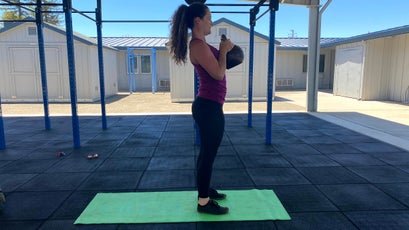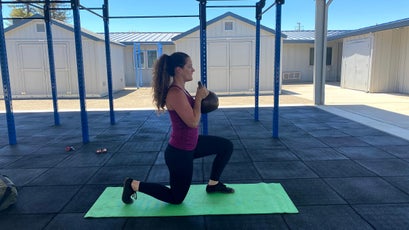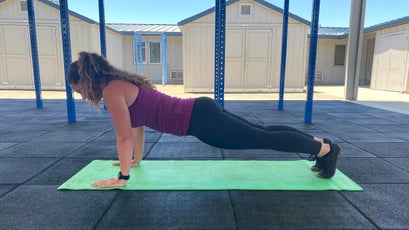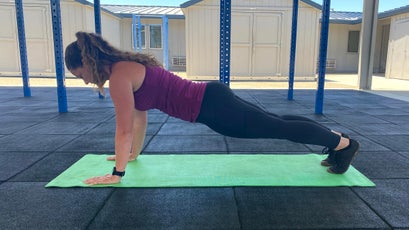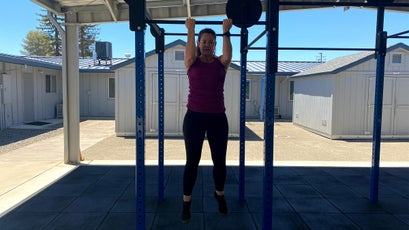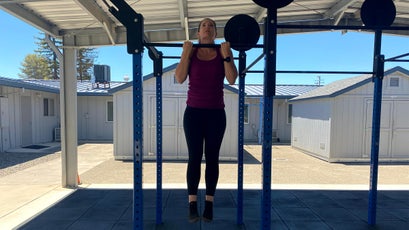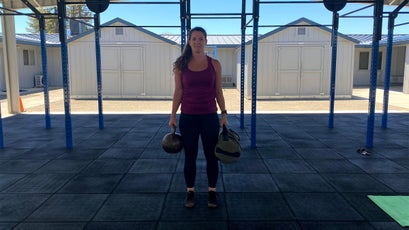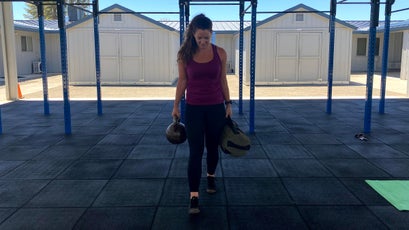Work Out Like a Firefighter
“],”renderIntial”:correct,”wordCount”:350″>
Quite a few wildland firefighters get the job done 72-hour shifts, which consist of hiking over rugged terrain with a pack that can weigh up to ninety kilos, explains former wildland firefighter Katy Luetke, a accredited strength and conditioning mentor for the California Office of Forestry and Hearth Protection. And these firefighters want to be in shape almost all 12 months: Luetke says that whilst fire period in California utilized to previous from June to Oct, it now operates from April by way of the finish of December, thanks to drought conditions exacerbated by weather adjust. “Your capacity to endure a period is pretty considerably dependent on both of those your endurance and your strength,” she explains. “The blend of all those two factors is get the job done capacity.”
The Exercise routine
Luetke keeps her workforce fit for responsibility with moves like the ones below. She suggests setting up with a 10-minute warm-up (she likes Turkish get-ups), adopted by stretching. Cycle by way of the full sequence 3 periods, resting only as required. You will want a reasonable body weight, a weighty body weight, a pull-up bar, a rope, and a sandbag—feel totally free to improvise, nevertheless, working with no matter what house objects you have. Luetke suggests completing the work out two to four periods a week.
The Moves
Reverse Goblet Lunges
What it does: Targets the lessen overall body and main
How to do it: Applying both of those arms, maintain a medium-body weight kettlebell (or dumbbell, cinder block, or no matter what you have) to your chest. Stand with your ft hip-width aside, parallel to just one one more.
Engaging your main, take a huge stage back with your suitable foot, bending your suitable knee. At the very same time, bend your still left knee to about ninety degrees, making positive it doesn’t go previous your still left toes. At the base of the motion your suitable knee really should graze the flooring. Have interaction your still left glute to stand, stepping your suitable foot forward to return to your setting up stance. Alternate sides for a complete of 16 reps.
Make it a lot easier by working with bodyweight, or improve the intensity by incorporating more body weight.
Force-Ups
What it does: Develops the chest, shoulders, triceps, main, and shoulder stabilizers
How to do it: Start by acquiring on all fours on the flooring. Retain your wrists straight underneath your shoulders to make the move more hard, or take a wider stance to make it a lot easier. Extend your legs so that your knees are straight and your body weight is distributed by way of your palms and your toes.
Retract your shoulders, have interaction your main, and bend your elbows to convey your chest down to the position where by it grazes the flooring. Straighten your elbows to return to the setting up posture. Sustain a neutral neck posture through. Execute 10 to 25 reps.
Want to dial down the intensity? Rest your body weight on your knees as a substitute of your toes. To make it harder, set a body weight plate on your back or dress in a weighted vest or backpack with something substantial within. To steer clear of injury, development step by step. Start with five kilos after you can full the higher finish of the rep selection with very good form, improve the body weight by one more five or so kilos.
Pull-Ups
What it does: Strengthens the back, arms, and shoulders
How to do it: Start underneath the pull-up bar with your arms totally prolonged overhead. Grip the bar with your arms about shoulder-width aside working with an overhand grip (palms struggling with away from you). If you are nonetheless mastering the move, Luetke suggests setting up with a mixed grip use an overhand grip in just one hand and an underhand grip (palms struggling with you) in the other. If you want to modify it even further, use an underhand grip and do chin-ups instead—a chin-up consists of the very same correct actions as a pull-up the only difference is your grip, which helps make it a lot easier.
For both of those chin-ups and pull-ups, retract your shoulders, have interaction your main, and bend your elbows to about ninety degrees, bringing your chin earlier mentioned the bar. To appear down, extend your elbows gradually and with command back to the setting up posture. Entire as numerous reps as doable with very good form.
To make it a lot easier, use a super band (a thick looped band with a rectangular profile) for guidance, start with a jump, or do reverse rows (aka bodyweight rows) if you have entry to a squat rack and a barbell or a TRX suspension coach.
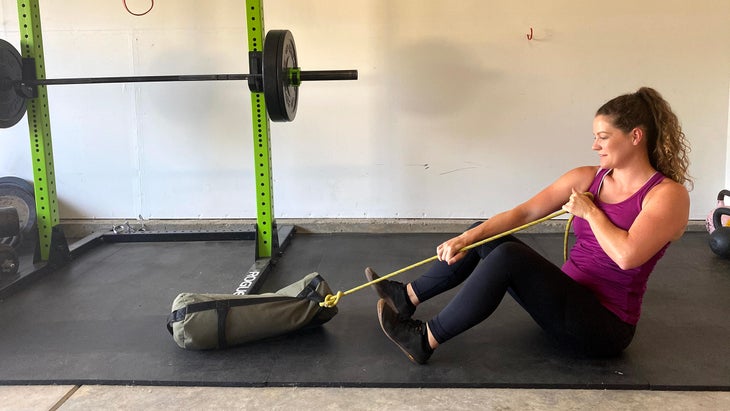
Sandbag Rope Pull
What it does: Operates the back, shoulders, traps, and biceps
How to do it: Tie just one finish of a rope to a sandbag—this could be a duffel bag stuffed with sand, weighty guides, rocks, bricks, or no matter what you have. With the other finish in your arms, unfurl the rope to its full duration and sit on the flooring with the bag in entrance of you. Bend your knees and plant your ft on the flooring a bit wider than hip-width aside. Have interaction your main and lean back a bit.
With your palms struggling with just one one more, grasp the rope in every hand. With your suitable arm totally prolonged, arrive at down between your knees. In the meantime, bend your still left elbow so your still left hand is holding the rope by your suitable armpit. As you bend your suitable arm to pull the sandbag toward you, release your still left hand, straighten your still left arm, grasp the rope between your legs, and pull. Proceed until eventually the sandbag is at your ft. Execute two rope pulls.
Uneven Loaded Farmer Carry
What it does: Targets the main, lessen overall body, back, biceps, triceps, forearms, and hand muscle tissues
How to do it: To start, deadlift a reasonable to weighty body weight into every hand from the flooring, so that you are holding them at your sides with your elbows totally prolonged. A dumbbell, kettlebell, or even a loaded duffel bag or suitcase will get the job done.
To do a deadlift, stand with your ft about hip-width aside. Keeping your back flat and your chest up, a bit bend your knees and hinge forward from your hips whilst reaching down to grasp your weights, preserving your elbows prolonged. Thrust your hips forward to appear back to a standing posture with arms by your sides, preserving your main engaged through.
Luetke suggests working with weights that are within just 30 % to fifty % of every other’s body weight, such as a 25-pounder and a forty-pounder.
At the leading of the deadlift, maintain your arms totally prolonged by your sides and stroll at a relaxed pace with a body weight in every hand for 30 seconds. Then set your weights down on the flooring, swap arms, and deadlift them back up from the flooring and stroll for 30 more seconds, for a complete of just one minute. (Really don’t fear about how considerably you can stroll all through that minute.)

